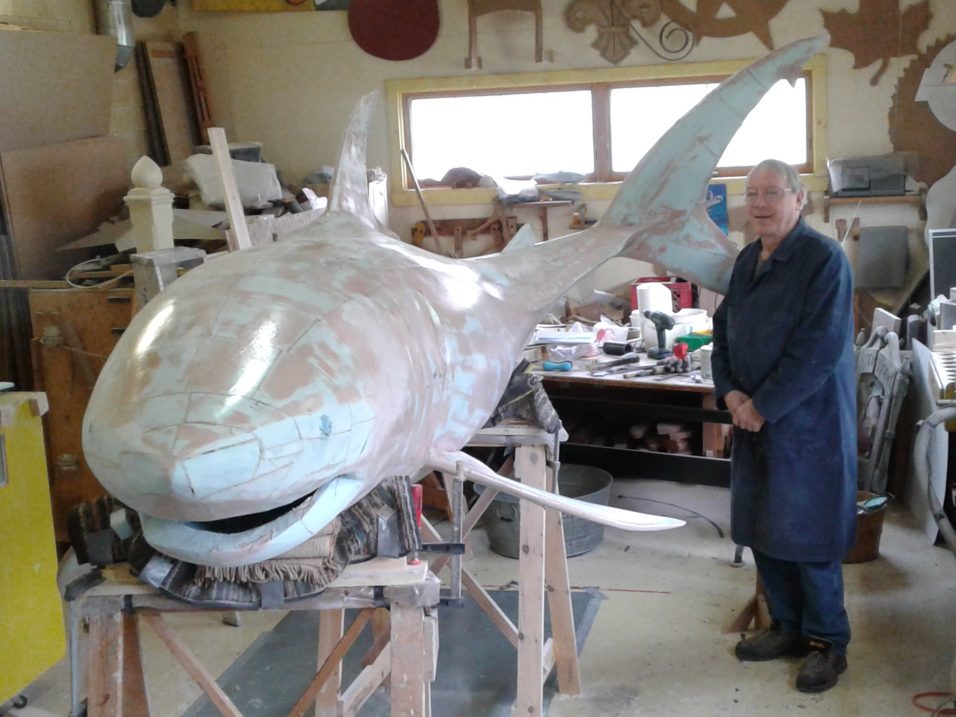Shark Sighting in Grand Pré
By Anna Horsnell
Doug Morse is an artist. He is perhaps skeptical of that statement, pointing first to his 35 year reputation as a wooden sign maker. His portfolio of work ranges from commercial, residential, and nautical signs to finely-detailed carvings. However, his most recent creation is quite simply a work of art.
Within his sizeable Grand Pré workshop, surrounded by a clutter of tools and copious amounts of paper calculations, drawings, and photos, Morse is sculpting a creature both terrifying and beautiful, namely a great white shark. The attention to exacting detail is remarkable even at this stage. With a bit more finish work, including texturing, painting, and varnishing, this life-size model is destined very soon to take its place amongst an educational display at the Bedford Institute of Oceanography (BIO) on the Dartmouth waterfront.
This isn’t Morse’s first model of what is unfortunately a species at risk. Approximately 27 years ago, he met David Coldwell, who had retired as the highly-skilled model maker for the Nova Scotia Museum of Natural History. They shared many interests and together their respective talents led them to collaborate on several projects. The first was a grouping of 25 various fish specimens including gaspereau, mackerel, and a seven foot by nine foot mola mola, or sunfish, commissioned in 2008 by the Royal Ontario Museum in Toronto. Then the two completed four sea turtles for BIO including a leatherback created from a mould they made of an animal tragically killed by a tangle of rope and a lobster trap. Morse learned much from his friend and has paid tribute to Coldwell since his passing in 2018.
Walking the length of the great white, running a hand along the powerfully curved body, is a surreal experience. This is a creature exquisitely evolved over centuries. Since accepting this commission in November, Morse has spent long hours researching his subject, the dangers these sharks face, and the work being done to save them. The model itself was created from a framework of carefully measured and positioned metal rods, supporting a layer of dense styrofoam, which he then sanded and sculpted to exact specifications. His devotion shows in the carefully positioned fins, the angle of the gill slits, the tell-tale notches, the lunate caudal or tail fin, and the pronounced caudal keel which identifies the great white. “It’s a work of nature, and so each shark is slightly different,†he explains, which encouraged him to give his model subtle distinctions. Morse made a visit to the site at BIO well in advance to determine the great white’s eventual placement in the exhibit, to ensure he positioned the shark’s body correctly, and to make sure that it would actually fit through the doors. Overall, the 4 meter long model is typical of the size of great whites found in Nova Scotia waters, and will weigh between 80 and 85 pounds when completely finished.
Morse is always conscious of the fact his models serve a community of scientists who know their subject inside out. He also feels the necessity of doing this work so people learn and understand about what’s happening in our oceans. His network of contacts within the scientific and conservation communities has grown, and he hopes to create more of these models in future. “I really enjoy this marine work,†he adds, “It’s fascinating.†Most decidedly, he is creating work with a real life purpose.
